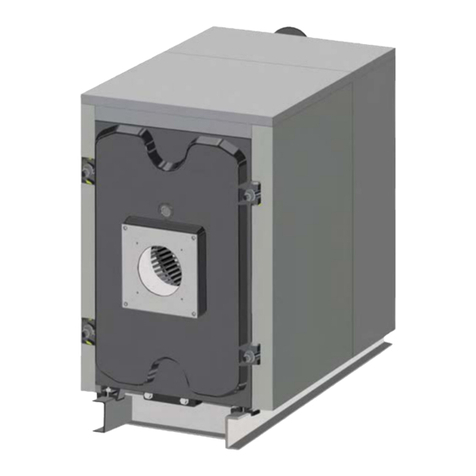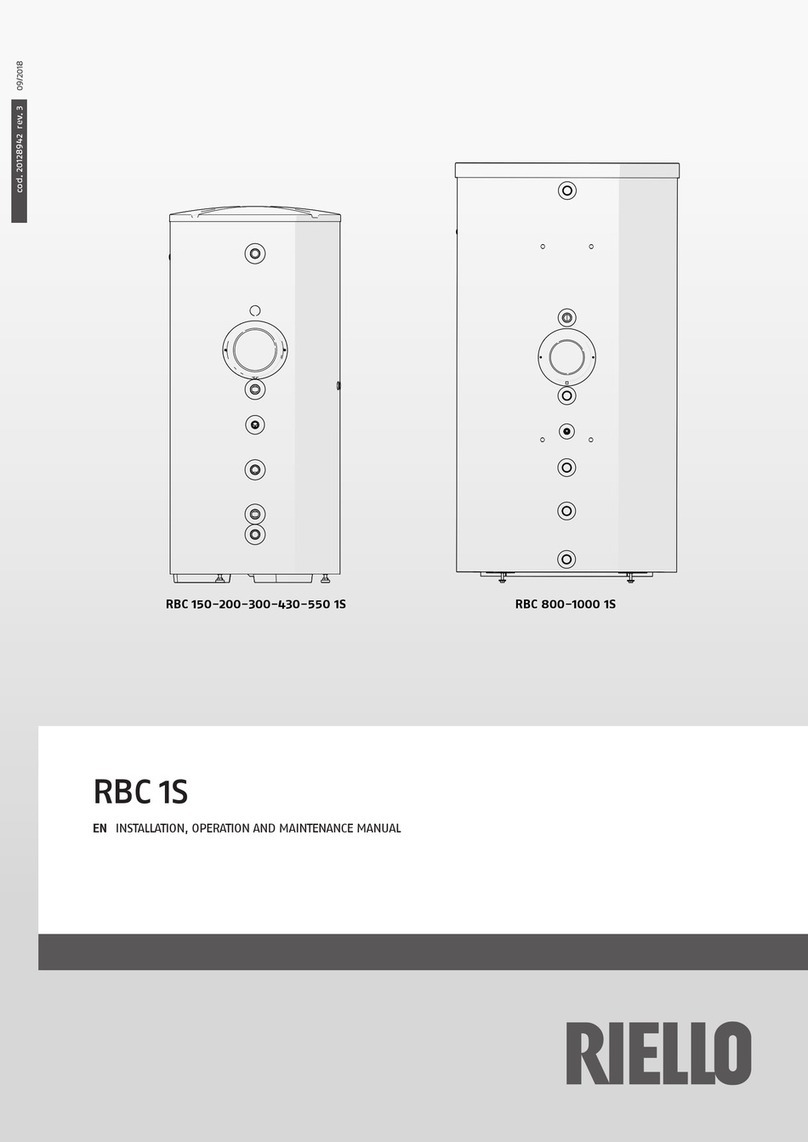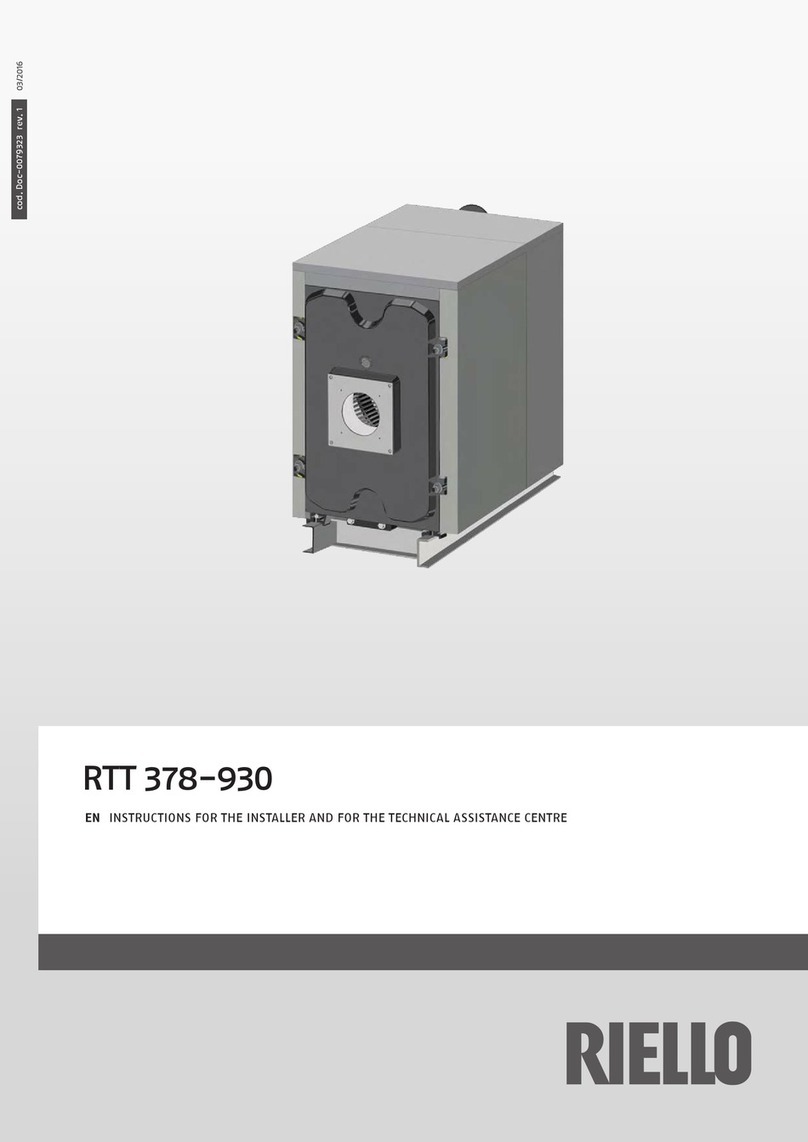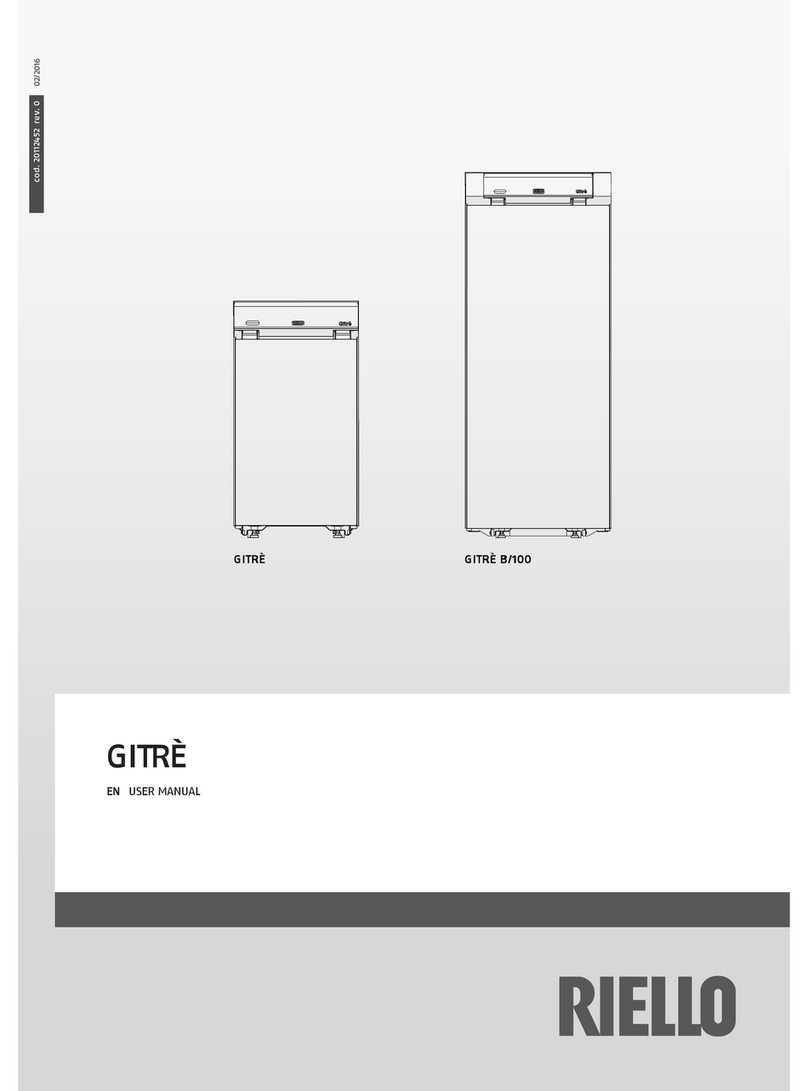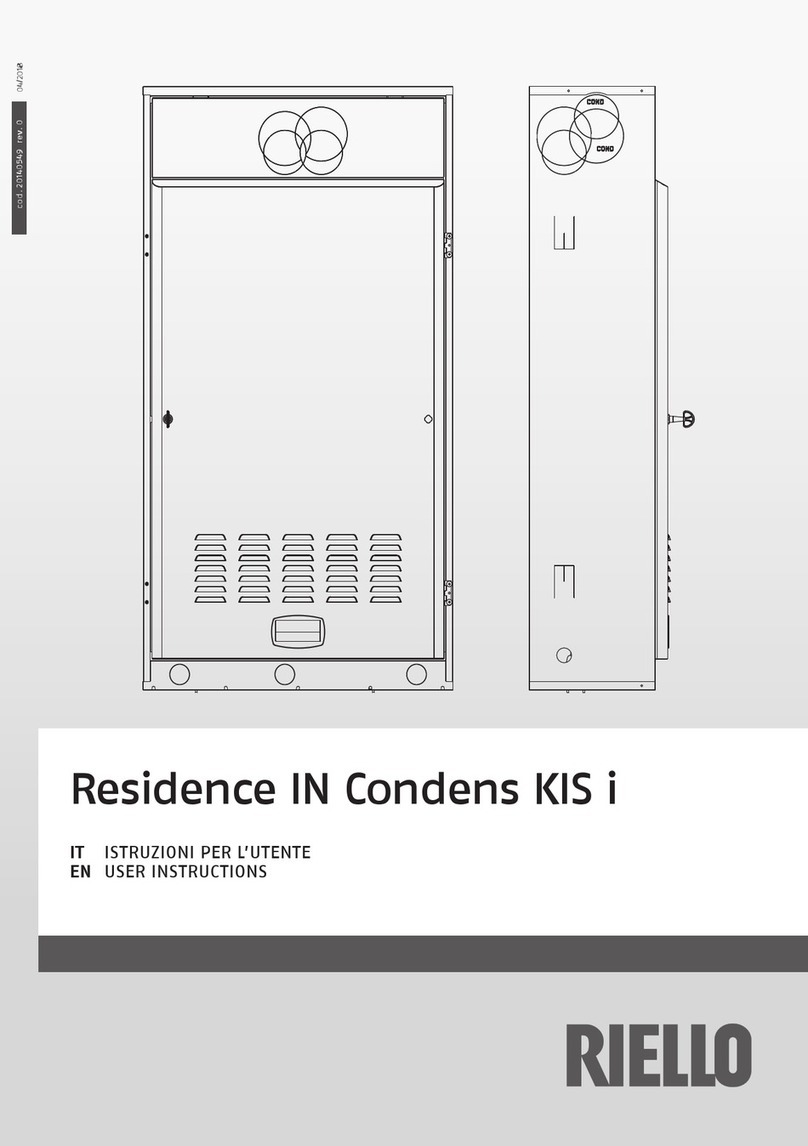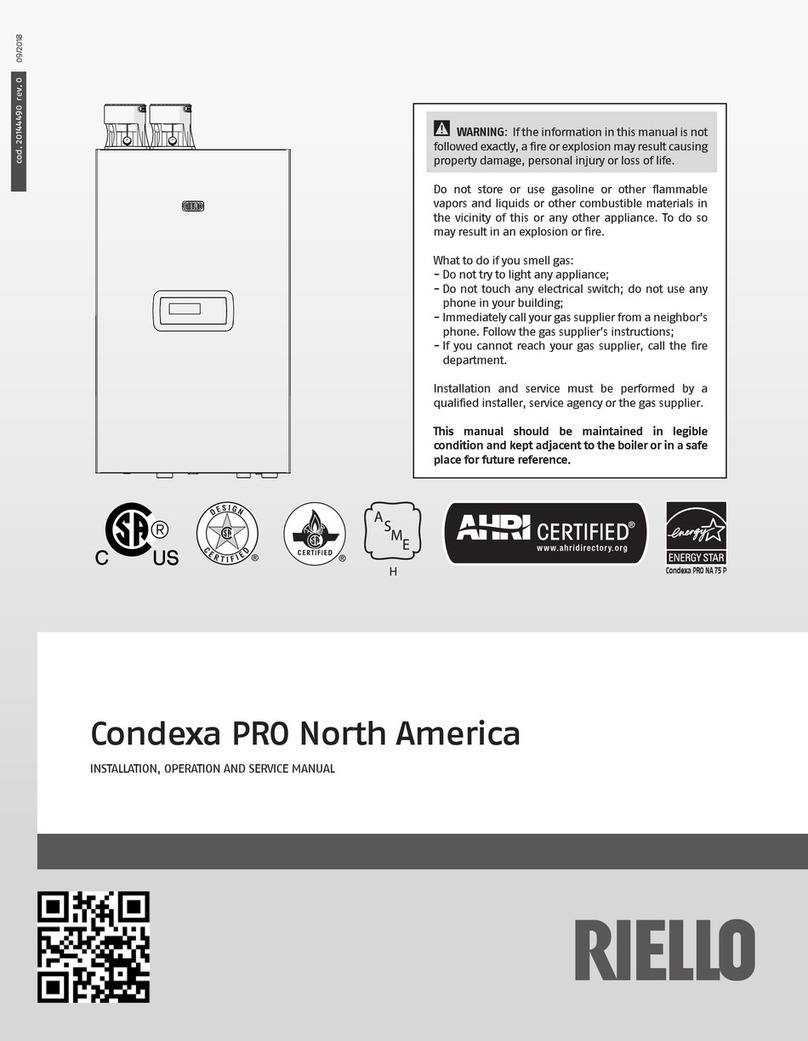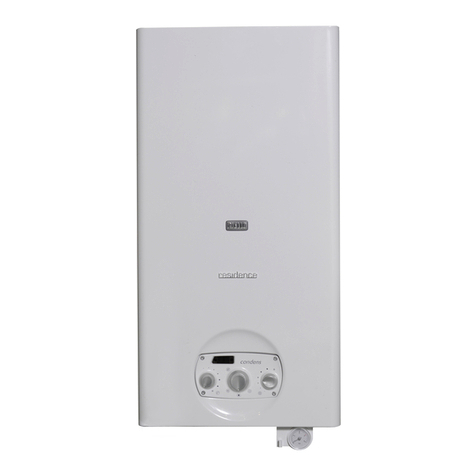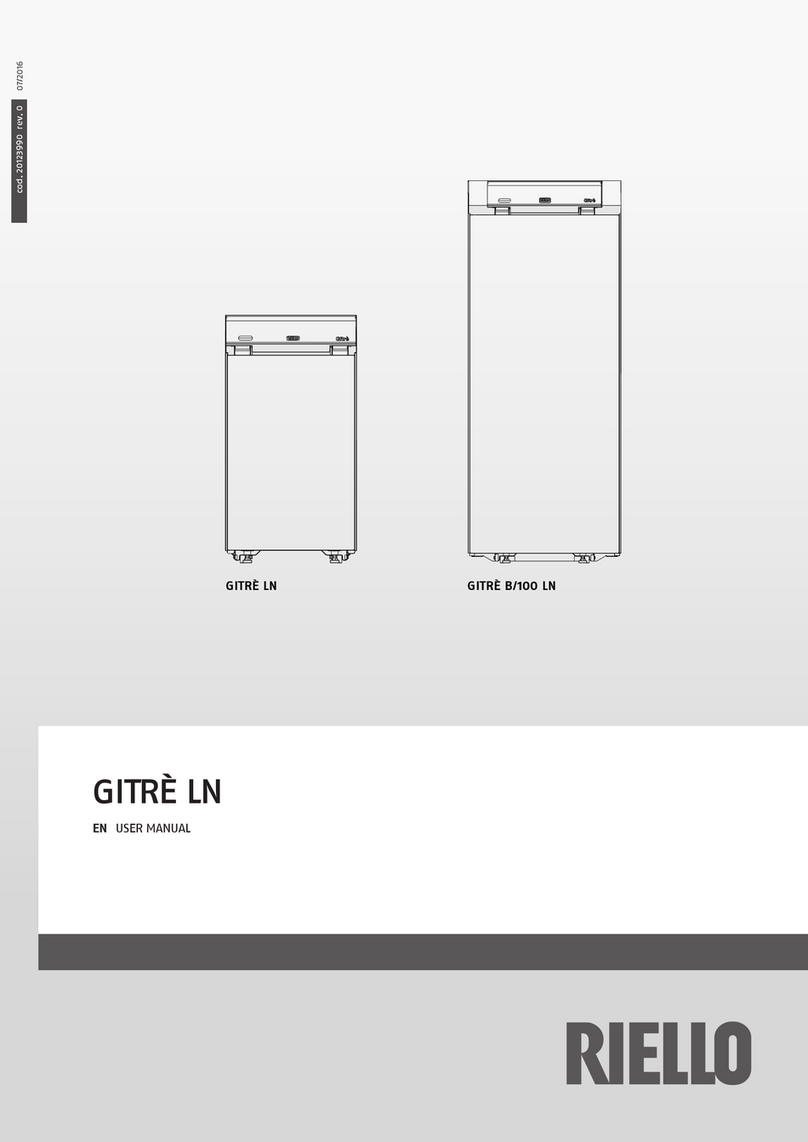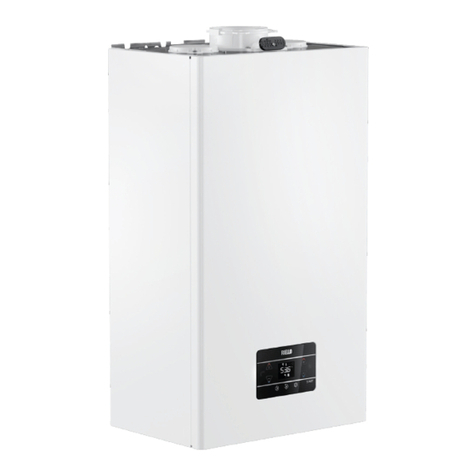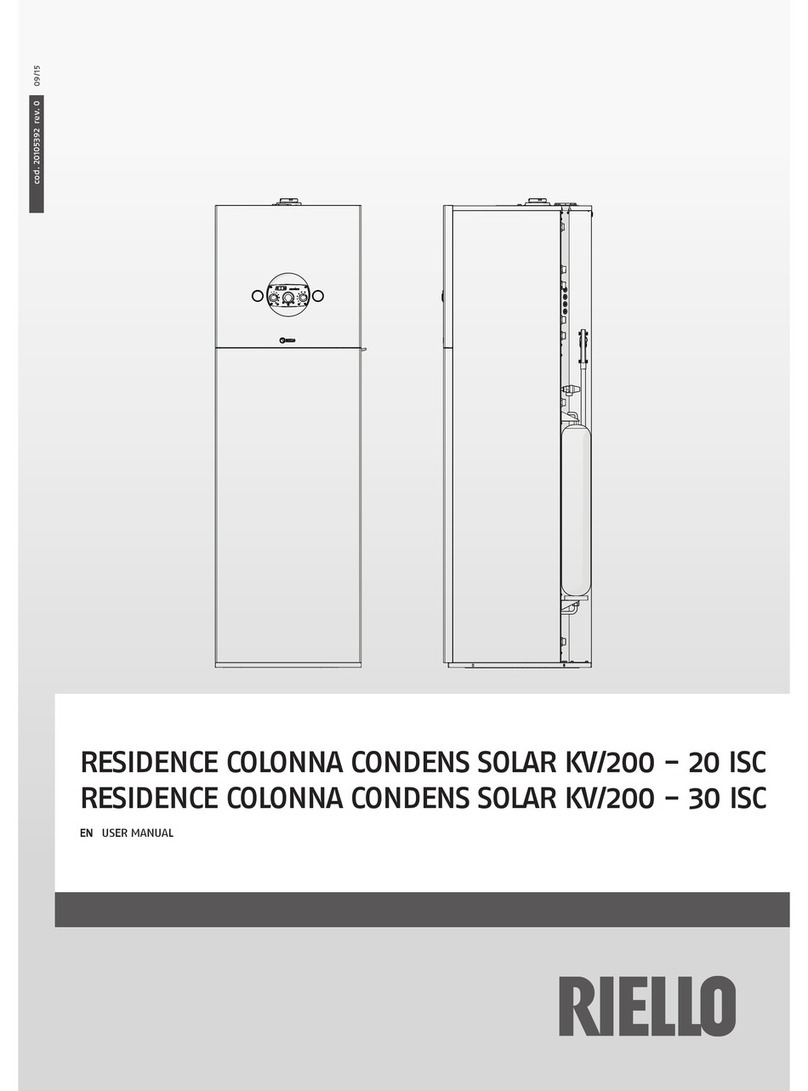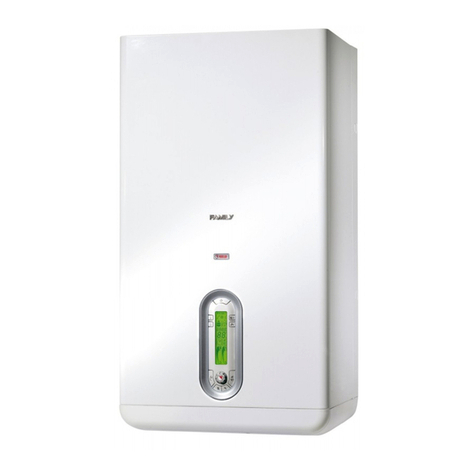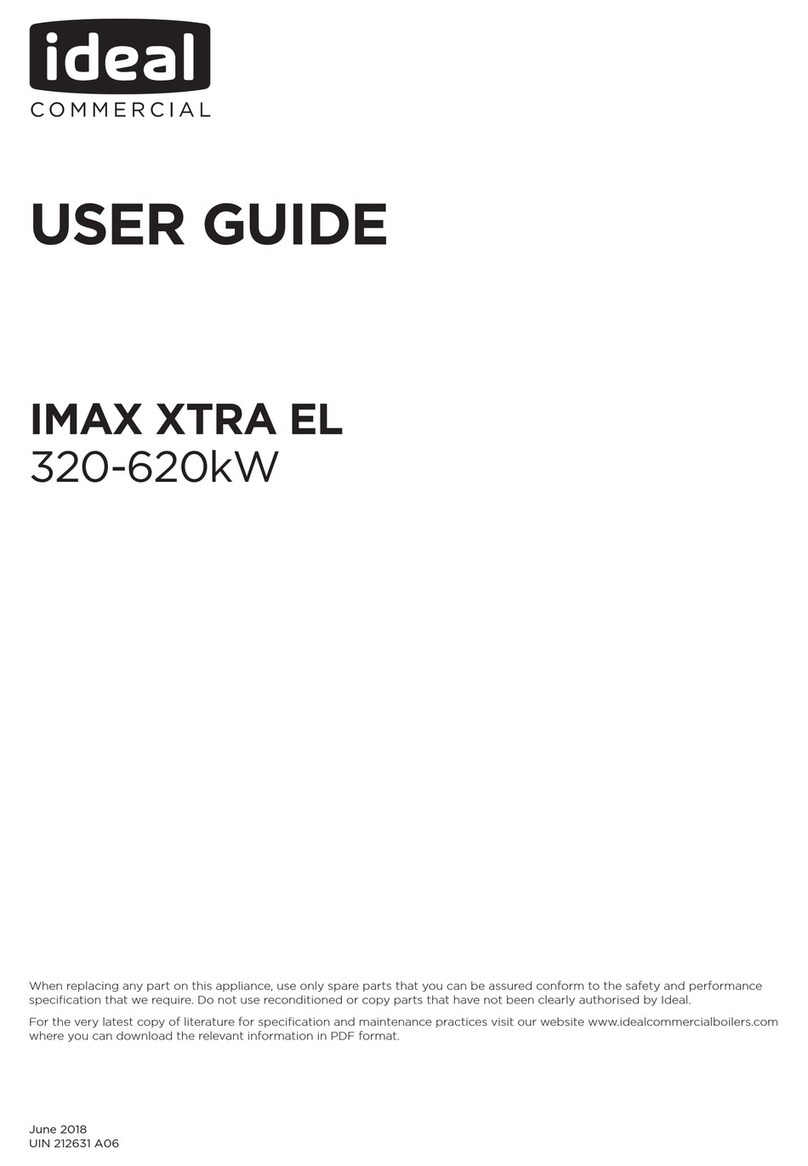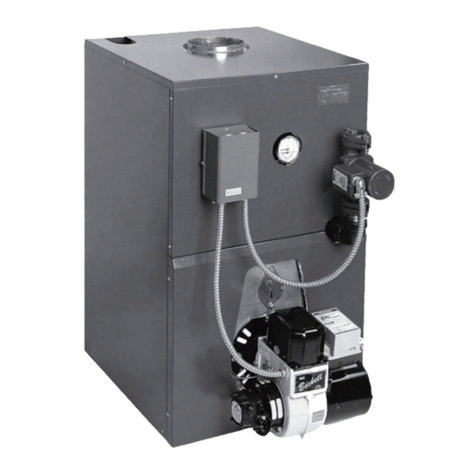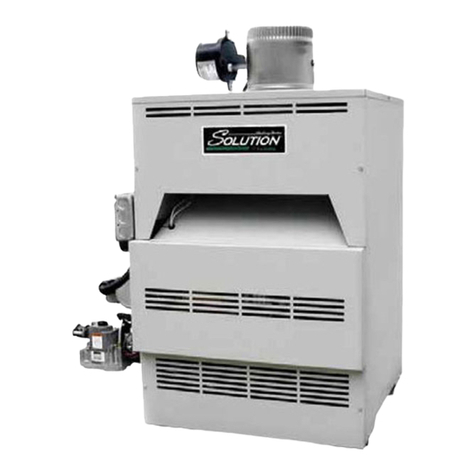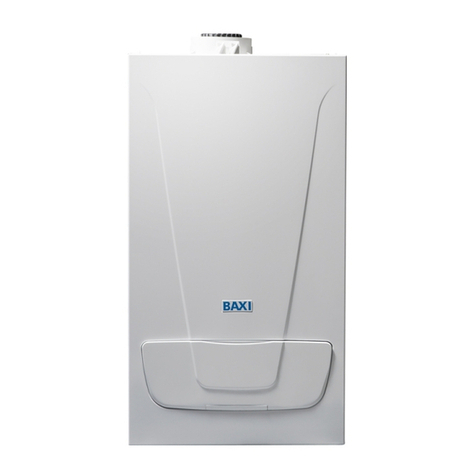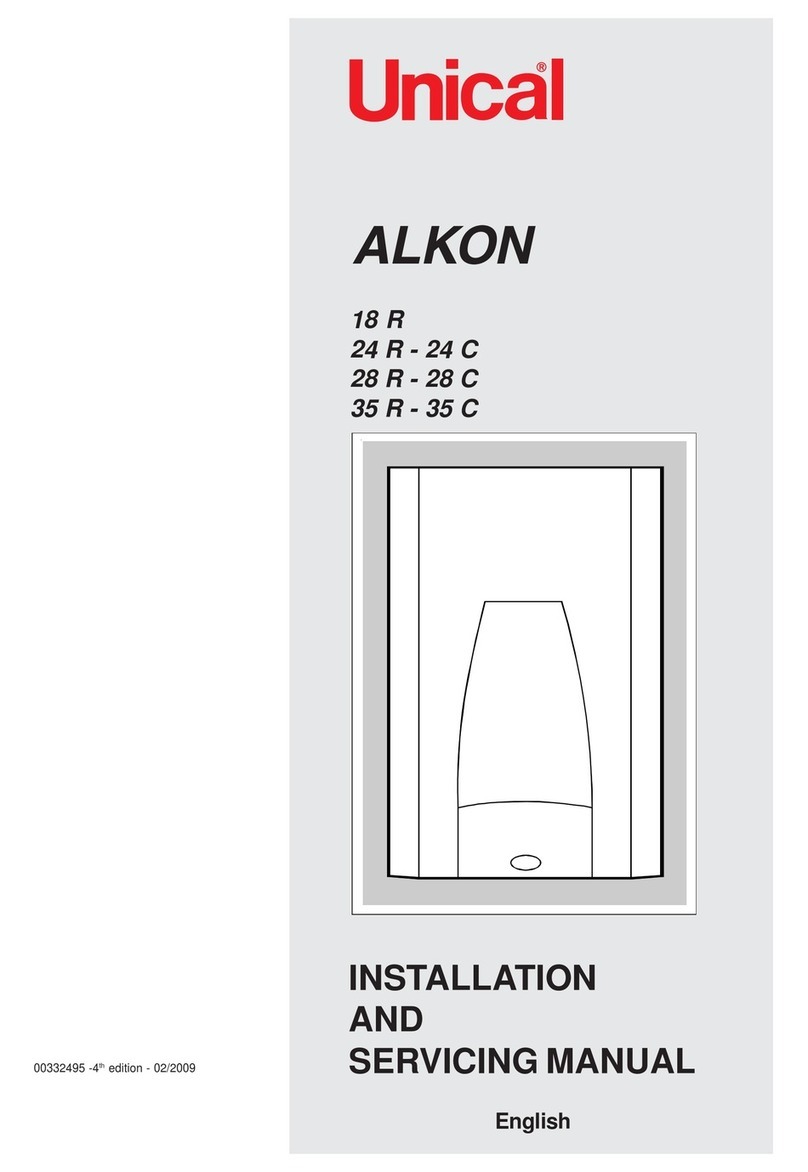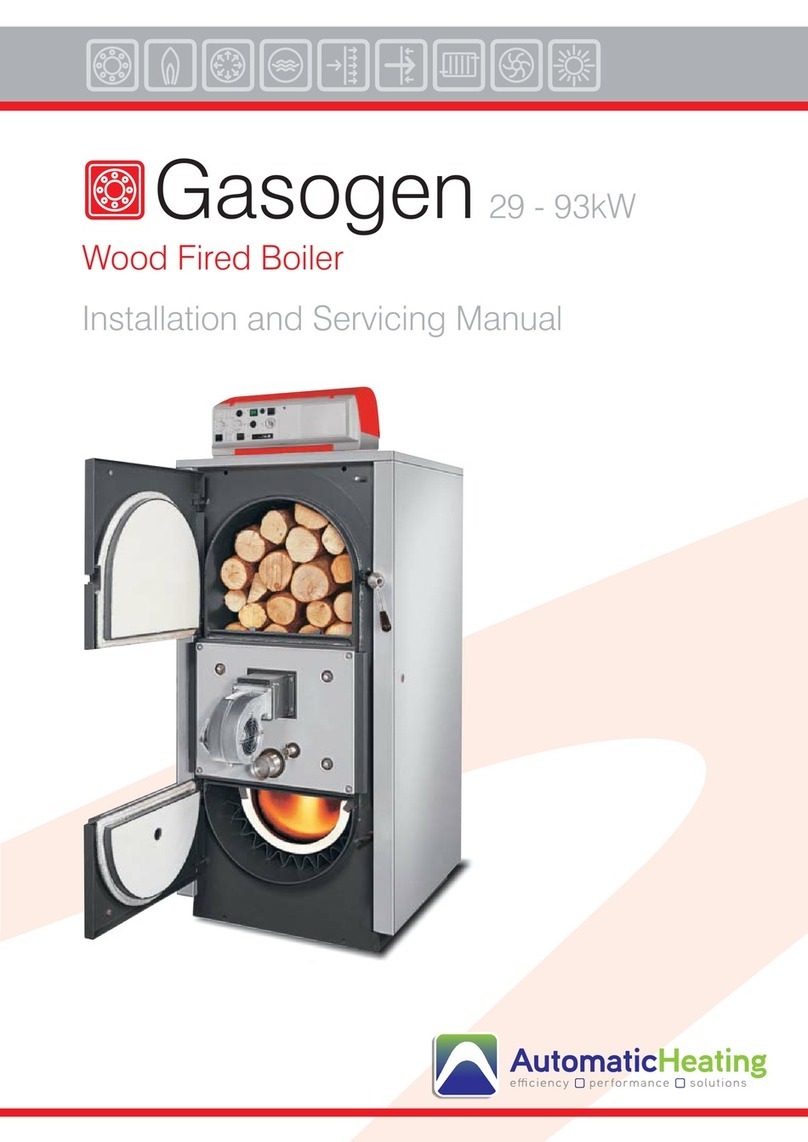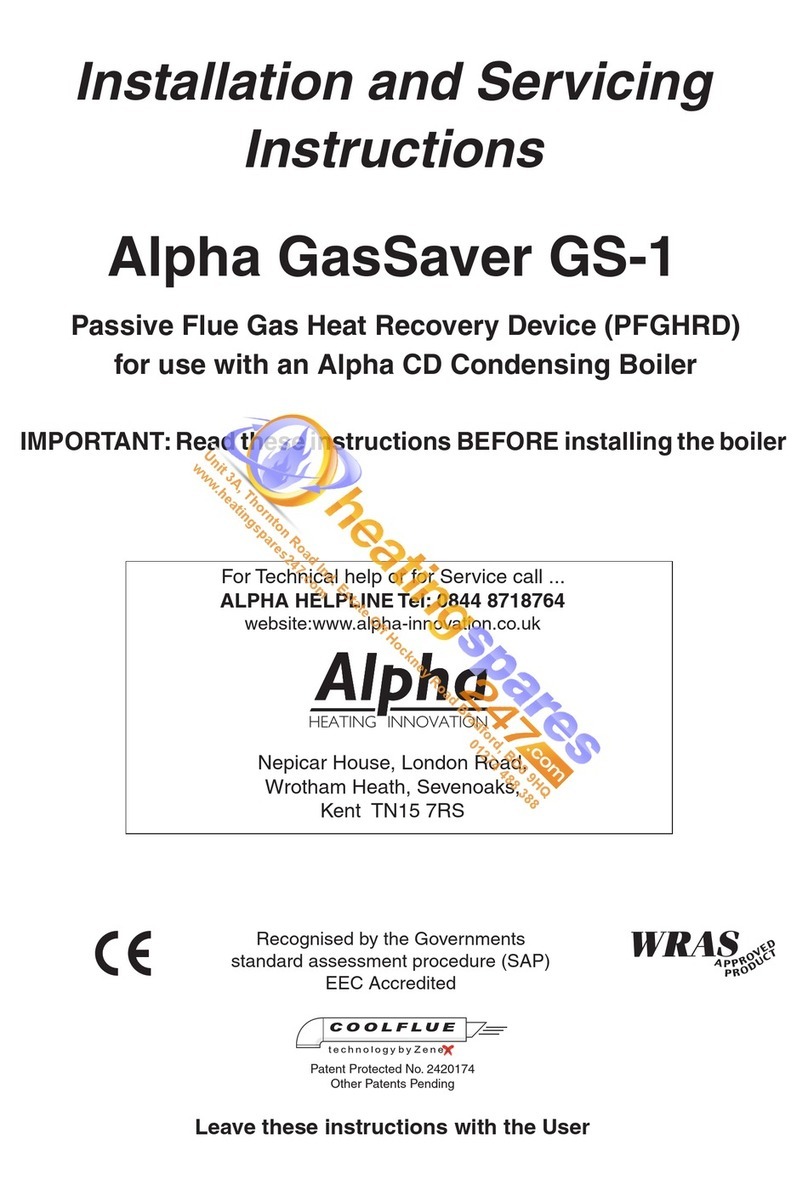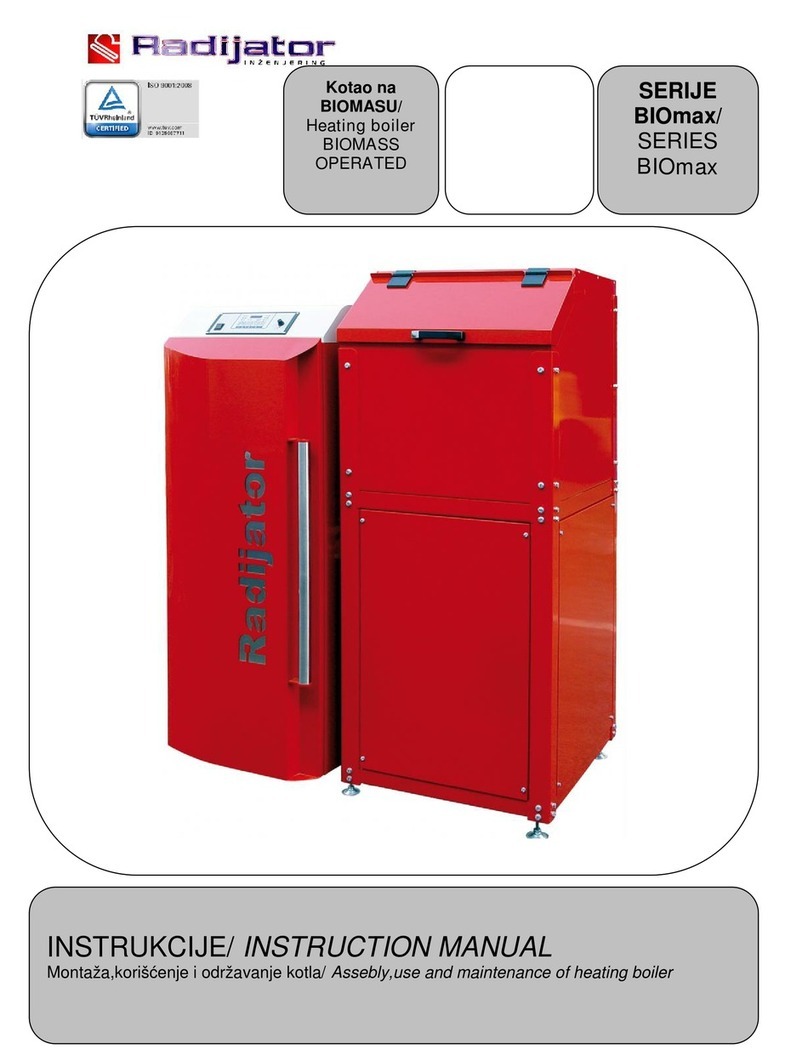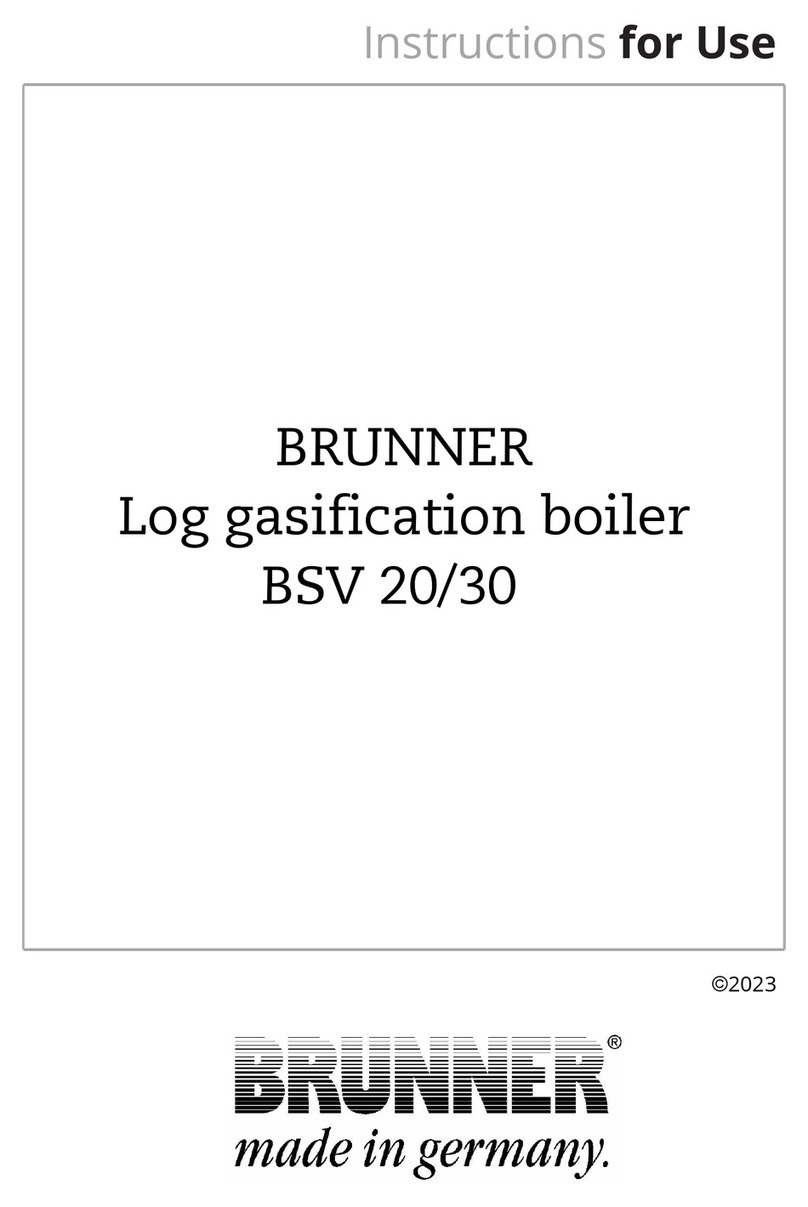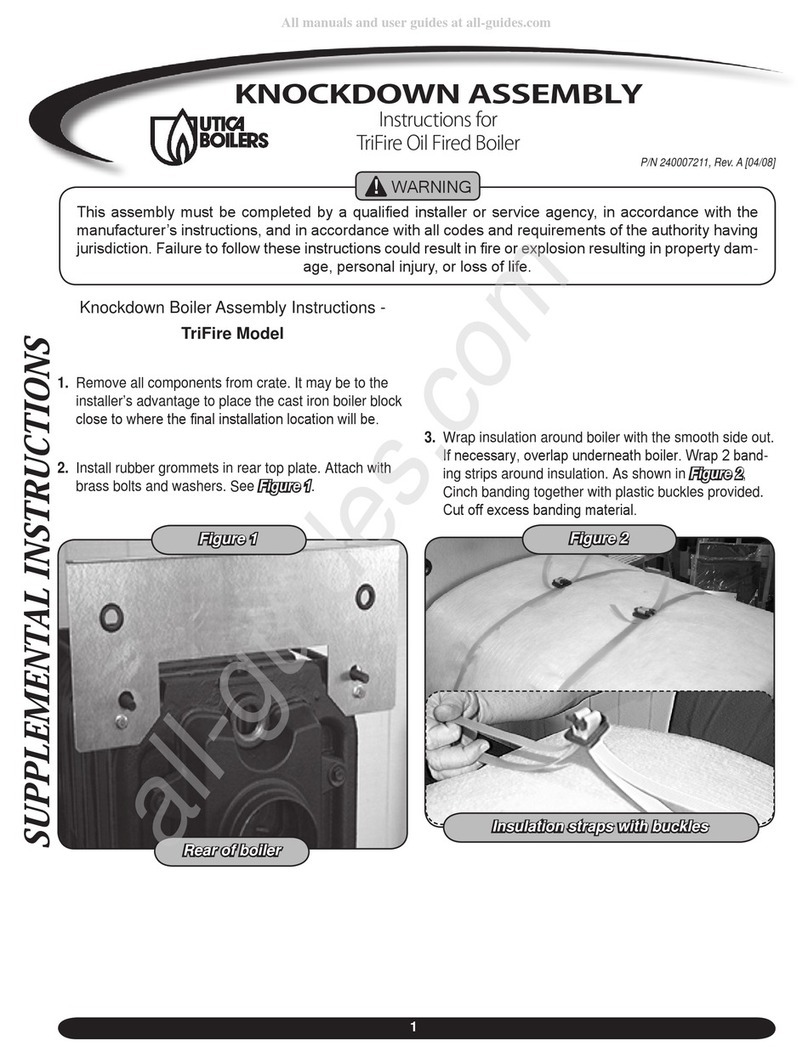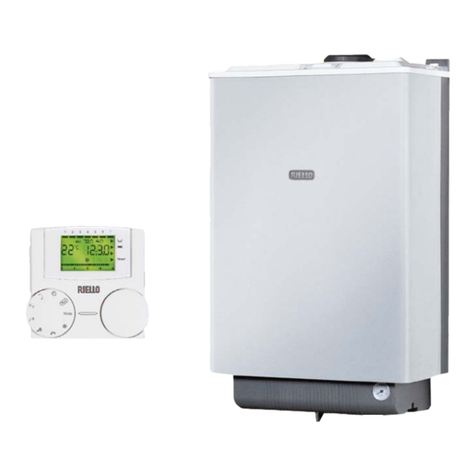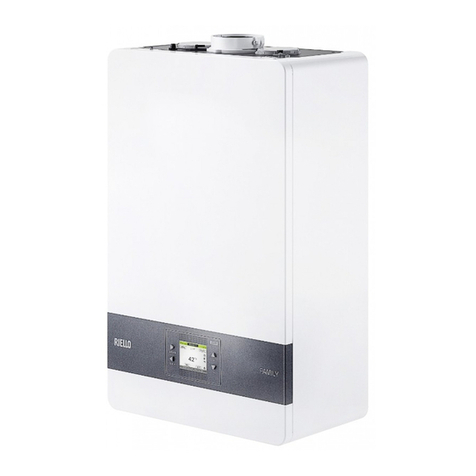
6WDUW$TXD&RQGHQV%,6
4
(1 (1*/,6+
,167$//$7,210$18$/
:$51,1*6$1'6$)(7<
9 After removing the packaging, check the integrity and
completeness of the supply and, otherwise, contact the Riello
Agency that sold the boiler.
9 The 6WDUW$TXD&RQGHQV%,6boiler must be installed by a
quali¿ed company in accordance with the regulations in force,
attheendofthe installationprocess, mustissuetheownerwith
a declaration of conformity certifying that the installation has
been performed according to the best working practices and
in observance of applicable legislation and of the indications
provided by Riello in the present instructions booklet.
9 The installer must instruct the user about the operation of the
appliance and about essential safety regulations.
9 When carrying out routine maintenance, it is always
recommended to check the consumption level of the sacri¿cial
anode.
9 The boiler must be used for the purpose for which it was
expressly built. The manufacturer accepts no liability within or
withoutthe contract foranydamagecaused to people,animals
and property due to installation, adjustment and maintenance
errors or to improper use.
9 In the event of a water leakage, shut off the water supply and
promptly contact the Technical Assistance Centre or other
professionally quali¿ed personnel.
9 Not using the boiler for an extended period of time involves
the execution of at least the following operations:
- turn the main appliance switch and the main system switch
to "off"
- close the fuel and water taps of the heating system
- drain the heating and domestic hot water circuits if there is
a risk of freezing.
9 The boiler maintenance must be carried out at least once a
year.
9 This booklet and that of the User are an integral part of the
appliance and therefore should be carefully preserved and
should always accompany the boiler even when it is sold to
another owner or user or when transferred to another system.
In case of loss or damage, please contact your local Technical
Assistance Centre for a new copy.
9 This appliance should not be operated by children younger
than 8 years, people with reduced physical, sensory or men-
tal capacities, or inexperienced people who are not familiar
with the product, unless they are given close supervision or
instructions on how to use it safely and are made aware by a
responsible person of the dangers its use might entail. Chil-
dren must not play with the appliance. It is the user’s respon-
sibility to clean and maintain the appliance. Children should
never clean or maintain it unless they are given supervision.
9 The boiler is constructed so as to protect both the user and
the installer from any accidents.After each intervention on the
product, pay special attention to the electrical connections,
especially the stripped parts of the wires, which must not
protrude from the terminal board in any way.
9 Dispose of all the packaging materials in the suitable
containers at the corresponding collection centres.
9 When disposing of waste, be careful not to harm human
health or employ procedures or methods which may damage
the environment.
At the end of its life, the product should be not be disposed of
as solid urban waste, but rather it should be handed over to a
differentiated waste collection centre.
Remember that the use of products requiring fuels, electricity and
water necessitates the respect of certain basic safety rules
such as:
0 it is forbidden to activate electric devices or appliances such
as switches, household appliances and so on if you notice a
smell of fuel or unburnt fuel;
0 in this case:
- ventilate the room by opening the doors and windows
- close the fuel shut-off device
- promptly call the Technical Assistance Centre or
professionally qualified personnel;
0 it is forbidden to touch the boiler while barefoot or if parts of
your body are wet;
0 it is forbidden to carry out any cleaning operations before
disconnecting the boiler from the electricity supply; to do this,
turn the main system switch to “OFF”;
0 it is forbidden to modify safety and adjustment devices without
the boiler manufacturer's permission and relative instructions;
0 it is forbidden to pull, detach or twist the electric cables that
emerge from the boiler, even if the boiler itself is disconnected
from the mains supply;
0 it is forbidden to plug or reduce the size of any openings used
for airing the installation area;
0 it is forbidden to leave Àammable containers and substances
in the room where the boiler is installed;
0 it is forbidden to disperse and leave packaging material within
children's reach as it may be a potential source of hazard;
0 it is forbidden to obstruct the condensate outlet.
'(6&5,37,21
6WDUW$TXD&RQGHQV%,6 is a wall-hung condensing boiler, with
premix burner and low emission of pollutants for heating and for the
production of DHW use and has a 45 litre steel storage tank.
This is an electronically controlled boilers with automatic ignition,
ionisation flame check and with proportional control system of the
gas and air flows, both in heating and DHW.
It uses an aluminium alloy boiler body, has a sealed combustion
chamber and, based on the gas discharge accessory used, is
classified in categories B23P, B53P, C13-C13x, C33-C33x, C43-
C43x, C53-C53x, C83-C83xC93C93x. The switching of the heating
and DHW modes is performed via a three-way electric valve which
set on DHW when in the rest position. To guarantee the correct
water output in the exchanger, the boiler is equipped with an
automatic by-pass.
The 6WDUW$TXD&RQGHQV%,6 boiler is also equipped with:
- Range Rated - this means the boiler is equipped with a device
that adapts it to the heat requirements of the system, so the
boiler output can be adjusted according to the energy needs of
the building.
- Circulator anti-blocking.
- First-level antifreeze (suitable for indoor installations).
- 8 litre expansion tank.
- 2 litre DHW expansion tank.
- Digital display indicating the operating temperature and alarm
codes.
- Pre-mix low emissions burner.
- Continuous electronic flame modulation for domestic hot water
and heating.
